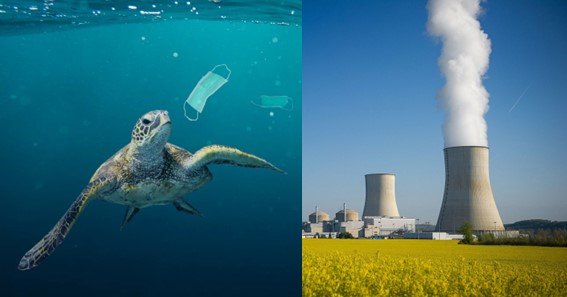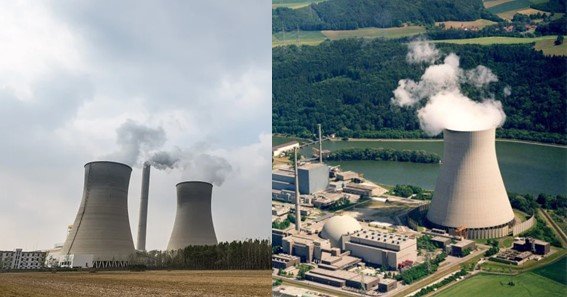Thermal pollution, the release of excess heat into water bodies, is a significant environmental issue caused by various industries, including nuclear power plants. While nuclear energy is often hailed as a low-carbon solution to energy needs, the heat discharged from cooling systems into nearby rivers, lakes, or oceans has a profound impact on aquatic ecosystems. But how exactly does thermal pollution from nuclear plants contribute to environmental change, and what can be done to mitigate its effects?
How Thermal Pollution Occurs in Nuclear Plants
Nuclear power plants use water from nearby bodies to cool reactors. After absorbing the heat generated during nuclear reactions, this water is discharged back into its source at much higher temperatures. This sudden temperature rise disrupts the natural thermal balance of the ecosystem, leading to thermal pollution. Unlike chemical pollution, thermal pollution affects the physical properties of water, but its impacts are equally harmful.
The Environmental Impact Of Thermal Pollution From Nuclear Plants
- Disruption of Aquatic Life
- What It Is: When water temperatures rise significantly, it creates unsuitable living conditions for many aquatic species, especially those sensitive to temperature changes.
- Impact: Fish and other marine species may experience stress or death, particularly those in colder environments. Warmer waters can also increase the metabolism of fish, leading to a higher demand for oxygen, which becomes scarce in warmer water.
- Decreased Oxygen Levels
- What It Is: As water temperature increases, its capacity to hold dissolved oxygen decreases. This directly impacts fish, plants, and other aquatic organisms that rely on oxygen.
- Impact: Oxygen depletion can lead to fish kills and a decline in biodiversity. Additionally, the growth of algae in warmer waters can further reduce oxygen levels, creating dead zones where life struggles to survive.
- Changes in Biodiversity
- What It Is: Thermal pollution alters the biodiversity of aquatic ecosystems by favoring species that thrive in warmer environments while driving out or killing those that cannot adapt to the temperature change.
- Impact: This imbalance can lead to the dominance of invasive species, further threatening native wildlife and plants, disrupting the ecological balance, and reducing the resilience of the ecosystem.
- Harm to Coral Reefs and Other Sensitive Ecosystems
- What It Is: Coastal nuclear power plants that discharge heated water into oceans can harm coral reefs and other temperature-sensitive ecosystems.
- Impact: Coral reefs are particularly vulnerable to even small temperature changes, which can lead to coral bleaching, where corals expel the algae living in their tissues, leading to widespread reef death.
Solutions To Mitigate Thermal Pollution From Nuclear Plants
To address the issue of thermal pollution from nuclear plants, several strategies have been proposed:
- Cooling Towers: These structures allow plants to cool heated water before releasing it back into natural water bodies, thus minimizing the thermal impact.
- Closed-Loop Systems: In this system, water is recirculated rather than being released into the environment, significantly reducing the volume of heated discharge.
- Artificial Lakes: Some plants build artificial lakes where heated water is stored, cooled naturally, and later released, preventing direct harm to nearby natural ecosystems.
- Regulations and Monitoring: Governments can enforce stricter regulations on thermal discharge, requiring nuclear plants to meet environmental standards for water temperature.

Conclusion
While nuclear power remains an essential component of the global energy mix, particularly in the push for low-carbon energy sources, the environmental impact of thermal pollution from nuclear plants cannot be overlooked. By implementing better-cooling technologies and enforcing stricter regulations, we can mitigate the damaging effects of thermal pollution and protect the delicate ecosystems that are at risk.
FAQ
- What is thermal pollution from nuclear plants?
Thermal pollution from nuclear plants occurs when heated water used to cool reactors is discharged back into natural water bodies, raising the water temperature and disrupting ecosystems. - How does thermal pollution affect aquatic life?
Thermal pollution decreases oxygen levels in water and creates unsuitable living conditions for temperature-sensitive species, leading to stress, reduced reproduction, or death. - Can thermal pollution lead to biodiversity loss?
Yes, thermal pollution can drive out native species unable to adapt to warmer temperatures, allowing more heat-tolerant, often invasive, species to dominate, disrupting biodiversity. - How can thermal pollution from nuclear plants be reduced?
Solutions include using cooling towers, closed-loop systems, or artificial lakes to cool water before releasing it into the environment and enforcing stricter environmental regulations. - Why is thermal pollution considered a silent contributor to environmental change?
Unlike visible pollutants, thermal pollution alters the physical properties of water, causing long-term damage to ecosystems without immediately noticeable effects.










